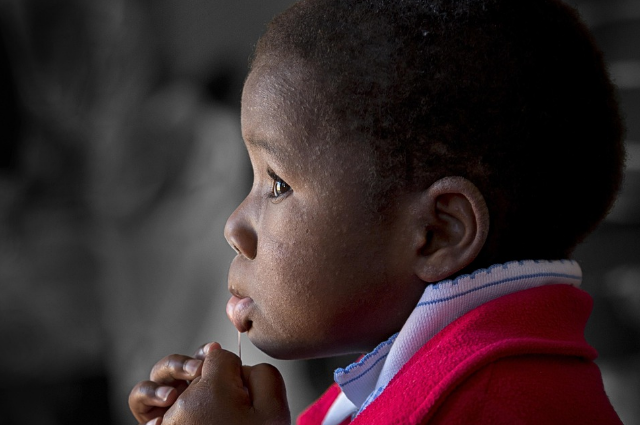
Just imagine that the future of your country gets pushed into darkness. Terrifying, right? Well, this is what happened from 1914 to the late 1930s in the Soviet Union, when more than 15% of the future generation was living on the streets! This article is about the Besprizornye section of the Soviet society in the post-World War I era. Besprizornye was a term used for the ‘unattended’ children of the USSR. These were children who had lost their families and were orphans with no future ahead.
Russia’s Revolutions Cast a Long Shadow:
The political situation in the Soviet Union was delicate as the country endured back-to-back revolutions, wars, and natural disasters. World War I from 1914-1918, the most famous October Revolution in 1917 and a brutal Civil War had killed over 16 million people, fracturing families and leaving millions of children without parents. By 1922, the Soviet government estimated that more than 7 million children were homeless in the country and addressed them as Besprizornye.
After the wars, the USSR was gripped by a devastating famine from 1921-1922, which killed around 5 million more people, thereby increasing the number of orphaned and abandoned children. Families across Russia couldn’t bear the weight of war, hunger, disease and migration. Some children were abandoned, while others ran away from homes that could no longer feed them. It was a devastating period of life for the entire nation!
International aid, especially from the American Relief Administration, was sufficient to feed over 4 million children, but millions more still wandered with no hope. The Soviet administration tried to set up orphanages across the country, but being under-resourced and lacking trained staff and infrastructure, they provided little to no help to these orphaned children.
Lost Childhood- Life on the Streets:
With no homes, guardians, and support systems, these children survived in train stations, markets, alleys, and abandoned buildings and tried to shed some light on their dark futures. They had become an inseparable part of urban life:
- Most children begged on the roads as this required no tools or skills. However, as the public sympathy started decreasing, they started selling flowers, cigarettes, newspapers, etc., to earn.
- Some children got themselves employed as labourers, carrying luggage, holding places in queues or by cleaning public areas and offices.
- Prostitution became common among the girls, with more than 88% street girls under the age of 15 years already engaged in this work according to a 1920 survey.
- Some children got involved in theft and formed gangs all across the Soviet Union. This was primarily due to hunger, but also seen as a means of defending territory for survival.
- Some children also became drug and alcohol addicts.
- Despite their youth and tragic pasts, these children were seen as threats to society. Media campaigns discouraged people from giving them money as alms and donate to state charities instead. The longer these children stayed on the streets, the more they were exposed to the criminal life of the underworld. They had become unintended consequences of the nation’s transformation.
Attempts to Fix the Mess:
The Soviet Government was under immense pressure because it knew it had to act. They knew that these children were the future of the nation, hence they tried to shape them into socialists. The government wanted to raise them into strong, loyal citizens who could help build the new Soviet society.
Orphanages were set up under government supervision, especially by an office called Narkompros (People’s Commissariat of Education). These places were meant to give children food, shelter, and education. However, there were too many children and not enough resources. Many orphanages were overcrowded, lacked proper care, and often had untrained staff. Instead of love and support, children often faced harsh rules and discipline, which destroyed their innocent lives. In some cases, children were sent to labour areas if they were seen as troublemakers. These places forced kids to do hard work while learning communist ideas. Some children were even sent to prison-like camps, especially after the age of 15.
The government believed it was helping these homeless children, making sure they didn’t live on the streets. However, under this political propaganda, many children never received the love they deserved and desired. Instead of care, they got orders. Instead of comfort, they got control. While some did go on to become loyal citizens, many others were hurt, forgotten, or punished, which just alienated them from society.
Forgotten Voices, Lingering Echoes:
Though the Soviet government claimed victory over child homelessness by the late 1930s, the Besprizornye had left deep scars. Later, under the rule of Stalin, children, especially those of political prisoners, were seen with suspicion and labelled socially dangerous. The state provided, or tried to, everything like a good parent, except the love and emotional support these children needed.
Soviet orphanages continued to operate for many decades, but the problems of overcrowding, underfunding and poor infrastructure never disappeared. Well, if it was in the fate of these children to become orphaned or get abandoned by their parents, what can the government do for them? In fact, why should they even do anything? This is something governments still follow today. The Besprizornye era just showed the fickleness of revolutions that are held all over the world. These revolutions were and are conducted in the name of a better future for the coming generations, and in the aftermath, when everything is done and dusted, that same ‘coming generations’ have to face the wrath of the unintended consequences of the revolutions, while the new government just turns a blind eye to them.
